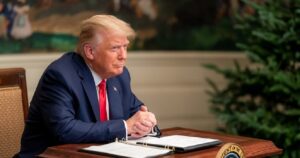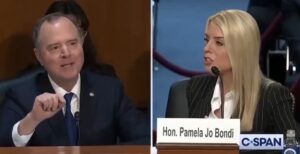Supreme Court backs Trump's education department overhaul
President Donald Trump just scored a major win in his quest to shrink federal overreach, as the Supreme Court has greenlit his plan to gut the Education Department.
In a nutshell, the court’s 6-3 ruling on Monday paused a lower court’s decision to reinstate about 1,400 laid-off department employees, paving the way for Trump’s vision of returning education control to the states.
Let’s rewind to March, when Education Secretary Linda McMahon dropped the axe on half the department’s workforce in a bold reduction effort. Trump didn’t stop there—he issued an executive order soon after, signaling his intent to close the department entirely. It’s a move that’s got bureaucrats sweating and parents cheering.
Trump’s bold push to decentralize education
Fast forward to Monday, and the Supreme Court’s decision in McMahon v. State of New York came down hard, splitting along ideological lines with a 6-3 vote. This ruling isn’t just a pause on reinstating those laid-off workers; it’s a signal that the judiciary isn’t about to stand in the way of trimming federal fat.
Trump took to Truth Social to celebrate, declaring this a “Major Victory” for parents and students nationwide. And who can blame him for crowing? After years of federal meddling in classrooms, returning power to the states feels like a breath of fresh air.
But not everyone’s popping champagne—Justice Sonia Sotomayor called the decision “Indefensible” in her dissent. She argued the judiciary should “check lawlessness,” not speed it up. With all due respect, Justice, isn’t it lawless to let unelected bureaucrats dictate education policy from D.C.?
Sotomayor’s dissent sparks heated debate
Sotomayor’s words sting, but they miss the bigger picture. When did local control become a crime? The Trump administration isn’t torching education; it’s trying to hand the reins back to communities who know their kids best.
Meanwhile, 20 Democratic-led states sued over the layoffs and planned closure, claiming the department can’t even handle basic tasks like reviewing college certifications for federal aid. Their argument got a boost in May when Judge Myong Joun ruled the administration’s real goal was to dismantle the agency without proper authority. Fair point, but isn’t bloated bureaucracy the real problem here?
The administration fired back, insisting the layoffs don’t equal a shutdown and that essential duties are still being met. They’ve got a point—cutting staff doesn’t mean cutting services, it means cutting waste. Let’s see if the critics can prove otherwise.
McMahon defends cuts with confidence
Education Secretary McMahon has been a steady voice amid the chaos, promising in March that closing the department wouldn’t slash vital funds for K-12 students or those with special needs. “We will continue to support” those who rely on these programs, she assured. Sounds like a plan to protect the vulnerable while slashing red tape—hard to argue with that.
McMahon doubled down on Monday, urging the court’s ruling to “deliver on its mandate” to restore excellence in education. She’s not wrong to push for results—American education has been drowning in federal mandates for too long.
She also emphasized a “lawful and orderly transition” by working with Congress, as Trump would need legislative approval to fully shutter the department. Turns out, even bold moves require following the rules. Shocking, isn’t it?
States’ rights vs. federal overreach
McMahon’s latest comments underscore the administration’s commitment to statutory duties while “empowering families and teachers” by reducing bureaucracy. If that’s not a winning formula for conservatives tired of top-down control, what is?
The battle isn’t over—Congress holds the keys to a full shutdown, and the lawsuits from those 20 states aren’t going away quietly. Still, this Supreme Court nod feels like a tipping point in the fight to rethink how education is governed.
At the end of the day, this ruling isn’t just about layoffs or department closures; it’s about who gets to call the shots for our kids’ futures. If returning power to the states means less of Washington’s heavy hand, count many of us in. After all, local solutions tend to fit better than one-size-fits-all mandates from afar.




